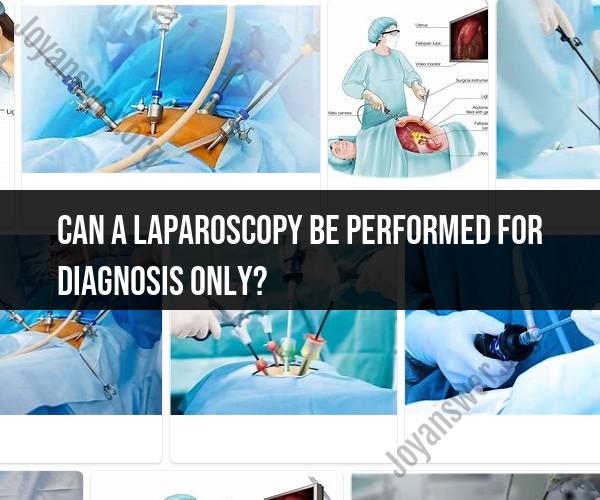Can a laparoscopy be performed for diagnosis only?
Yes, a laparoscopy can be performed solely for diagnostic purposes. This procedure is known as a diagnostic laparoscopy, and it is a minimally invasive surgical technique used by healthcare professionals to visually inspect and evaluate the abdominal and pelvic organs for various medical conditions or to confirm a diagnosis. Diagnostic laparoscopy can be valuable when other diagnostic methods, such as imaging or blood tests, do not provide conclusive results or when a direct visual examination is necessary.
Here are some key points about diagnostic laparoscopy:
Minimally Invasive: Diagnostic laparoscopy is a minimally invasive procedure, which means it involves small incisions and the use of a laparoscope (a thin, flexible tube with a camera and light source) to visualize the internal organs. This minimizes trauma to the body compared to traditional open surgery.
Diagnostic Applications: It can be used to diagnose a range of conditions, including but not limited to:
- Unexplained abdominal or pelvic pain
- Pelvic inflammatory disease (PID)
- Endometriosis
- Adhesions (internal scar tissue)
- Ectopic pregnancy
- Ovarian cysts or tumors
- Appendicitis
- Cancer staging (e.g., ovarian, cervical, or uterine cancer)
Direct Visualization: The laparoscope provides a direct, real-time view of the abdominal and pelvic organs, allowing the surgeon to assess their condition, identify abnormalities, and, if necessary, take tissue samples (biopsies) for further examination.
Treatment Option: In some cases, if a problem is identified during the diagnostic laparoscopy (e.g., removal of a small ovarian cyst or treatment of endometriosis), the surgeon may perform therapeutic procedures during the same operation.
Recovery: Recovery from diagnostic laparoscopy is typically faster than that of open surgery. Patients may experience mild discomfort or soreness at the incision sites, but they can usually resume their normal activities relatively quickly.
Risks: As with any surgical procedure, there are potential risks associated with laparoscopy, including infection, bleeding, and injury to nearby organs. These risks are generally low but should be discussed with the healthcare provider.
The decision to perform a diagnostic laparoscopy is made based on the patient's medical history, symptoms, and the need for a precise diagnosis. It is typically recommended when non-invasive diagnostic methods have been inconclusive, and when the potential benefits of obtaining a direct view of the abdominal and pelvic organs outweigh the risks associated with the procedure.
It's important for individuals to discuss the details of the procedure, including its purpose, risks, and potential outcomes, with their healthcare provider before undergoing a diagnostic laparoscopy.


